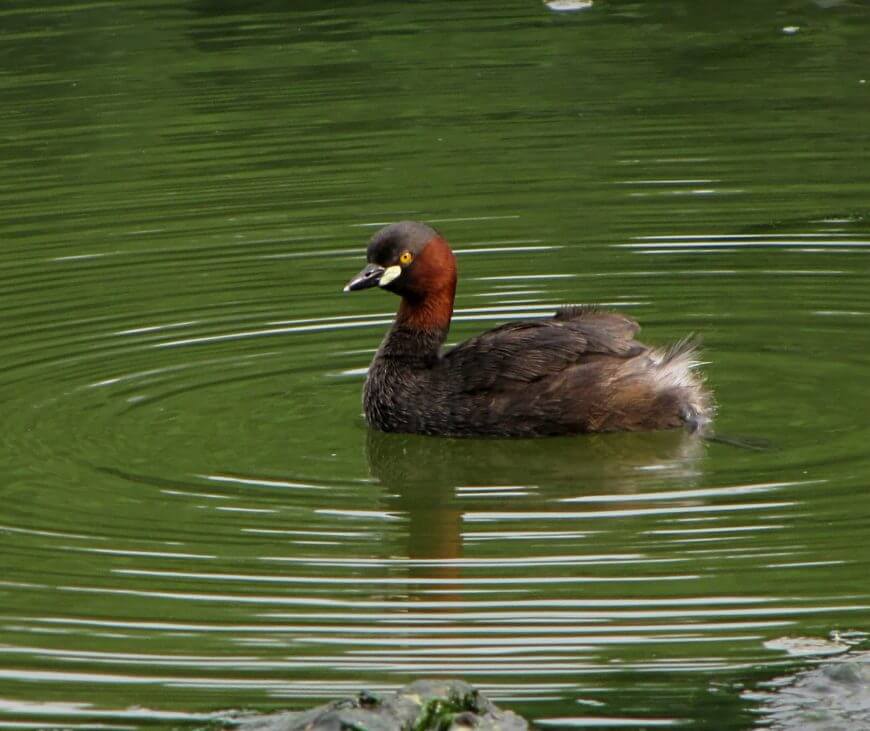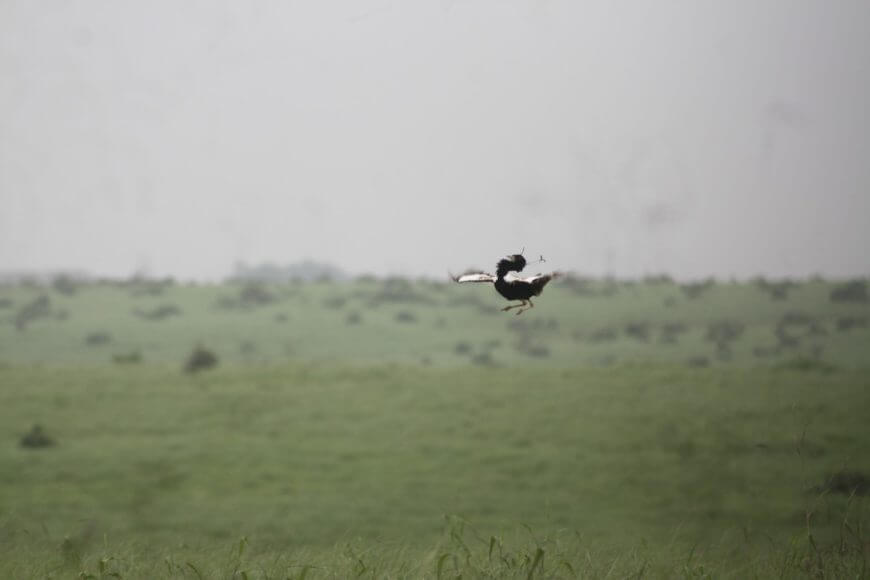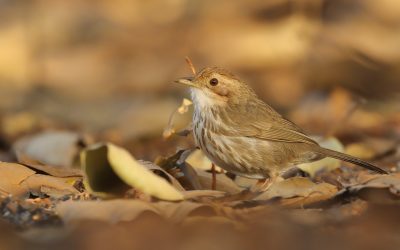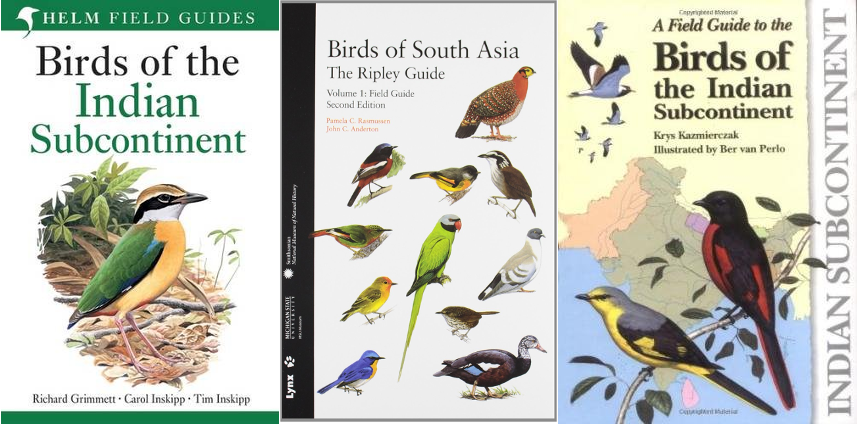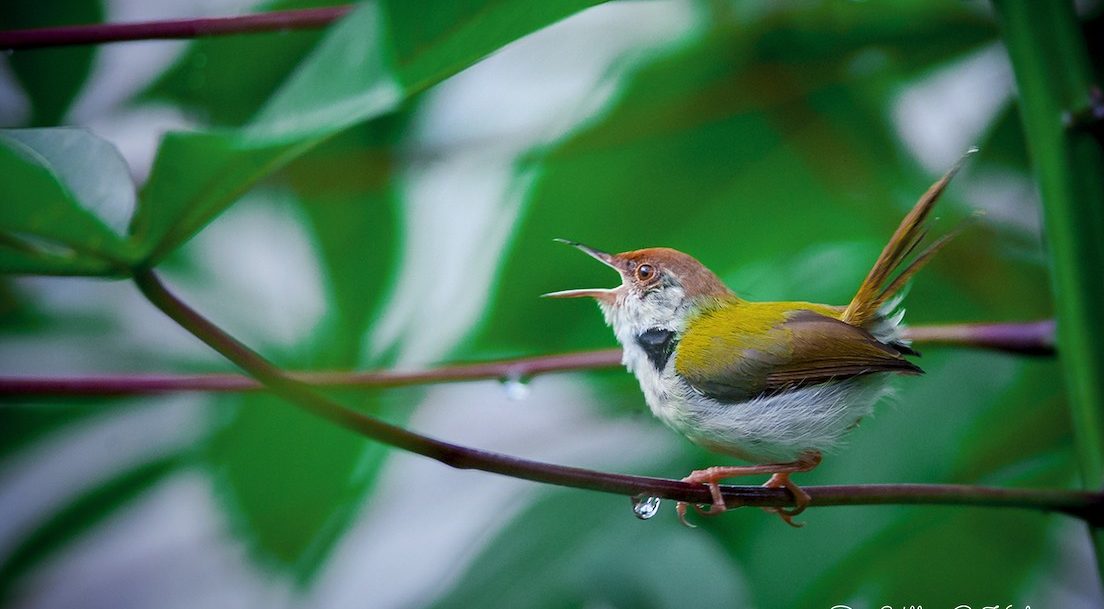After Part 1 and Part 2, this is the third part of the Getting Started series.
For someone who is birding for the first time, it can be hard to know where to start. Finding a bird and then looking at it is the easy bit, but the process then of identifying it positively while running through over 1000 possibilities in a field guide can be rather daunting.
This post is the introduction to a series that explains how to go about being better with identification in the field and minimise your chances of wrongly identifying a bird.
Every time you see a bird, try and take note (use a pen or paper, or take a photograph) of at least one of the following features (listed by priority, but if you find one easier than the other – feel free to change the order):
a. Shape, Structure, and Size:
By looking at the shape and structure of the bird and its parts, you can narrow it down to a limited number of species. Check how the bird is shaped overall – is it long? Is it very round? Does it have a short conical beak? Does it have a long and curved beak? Is the tail quite long or short? Is there a crest?
Similarly, by comparing sizes with neighbouring birds or with familiar trees/other objects can be very useful too. Do remember that size is best judged when there is a reference point in view as well. Apart from comparing with other birds, it is also interesting and useful to compare certain features of bird with other features of the same bird (eg length of the wings in relation to length of the tail). Paying attention to proportions can be very rewarding as you get more skilled!
- Both coots and grebes share the same habitat, but their shape and size help IDing them even from a distance
- Eurasian Coot
- Little Grebe
b. Colours and Markings
You’re bound to notice the colours on a bird. But do also take a look at any marks such as bars/stripes, patterns such as checks or streaking, or visible spots or flashes of colours. Sometimes, a note on marks and patterns may be as useful as the colour.
Be mindful that colours, markings and patterns may change with light, feather moult, time of the year, and the angle from which the bird has been seen. For this reason, it is important to be wary of relying solely on colour and other plumage details.

Greenish Warbler (above) and Hume’s Warbler (below): The Hume’s Warbler has much more striking markings – bigger wing bar, white spots on tertials, dark beak and legs
c. Behaviour
“You can know the name of a bird in all the languages of the world, but when you’re finished, you’ll know absolutely nothing whatever about the bird… So let’s look at the bird and see what it’s doing — that’s what counts. I learned very early the difference between knowing the name of something and knowing something.” – Richard Feynman
Knowing a bird and what it does actually goes a long way in helping knowing the name of the bird too. Different species and species-groups exhibit different behavioural characteristics that can be very useful in aiding with the identification of the bird. Observe how the bird moves. Does it sit at one place and fly only to catch an insect and return (eg, a flycatcher)? Does it run after its food (eg, plovers and pipits)? Does it display vividly when singing (eg, grassbirds)? Is it a loner or in a group (eg, Jungle Babblers are always in groups)? Is it aggressive or shy (eg, crows chasing raptors)? All these and any other details you note will help you identify a bird.
In above video, it’s easy to tell that the bird is a wagtail by its behaviour of pumping its tail up and down.
The foot stirring method of hunting is typical of Little Egrets.
d. Sound
Songs, calls and other sounds that birds make are a key, and often diagnostic, way to tell species apart from one another. In fact, good and experienced birders usually rely as much on the ears as on the eyes. Learning sounds requires practice and our understanding of the vocalisations of even some of our common species is fairly incomplete – so many see this as a great way to begin contributing to our knowledge database.
You can check out sound recordings of birds from India in the Macaulay Library or on Xeno-Canto.
e. Habitat
Where you are (and when) usually dictates what species you’ll see. Identification of birds is often a game of probabilities and accounting for your location, the habitat and the seasons can help you rule out species unlikely to be encountered at a particular place and time.
- If you’re in the dense jungles of S India, Himalayan foothills or NE India; then you can expect to see a Great Hornbill. © Murugesh Natesan
- Lesser Floricans (and other bustards) inhabit wide open grasslands. These birds will not venture into thick forests. Lesser Florican © Sachin Main
A few tips for beginning birders:
a. Write it down
It is easy to forget the specific details that our eyes and ears pick up unless we write them down. Writing notes as soon as possible makes it easier to identify species more accurately later. Occasionally, the features and behaviour you have observed might not have been documented earlier and you could be adding to the overall knowledge of a species.

Brown-breasted Flycatcher © Ragupathy Kannan
The lack of such notes can often lead to a frustrating experience as one flips through page after page of a field guide without a reference point.
b. Spend time with common birds
Birders can have a tendency to ignore and walk right past common birds to go searching for birds that are more “prized” or rarely seen. For those new to birds, this can be a big mistake!
Spend time with the birds that are common around you. Get to know them better – their plumage, shapes, variations, calls, behaviour, etc. These are the birds you are most likely to encounter around you and the more you know them, the easier it will be for you to identify an unexpected bird when you see it.
c. Use Combinations
One swallow does not make a summer, and only one feature rarely identifies a bird. While it is often tempting to be swayed by one feature to ID a bird, it is best to rely on multiple features before arriving at any conclusive identification.
This combination could be a mix of different patterns, of patterns and shape, of shape and habitat, etc; and one should try and pick out at least 2 or 3 features to base an ID upon. Over time and with experience, this will become second nature to many birders.
d. It’s not a competition, give it time and enjoy
Birding isn’t always easy. Some birders take more time than others to understand some things, and even the most experienced birders regularly make mistakes and continue to learn more about the birds they see! In fact, the best birders are often those who can accept that positive identification is not always possible and that sometimes, birds just cannot be identified to species level.
At the end of the day, do remember that the birds don’t care if you identify them wrongly – and it’s OK to take your time to learn and ponder as much as possible before arriving at a conclusive identification.




